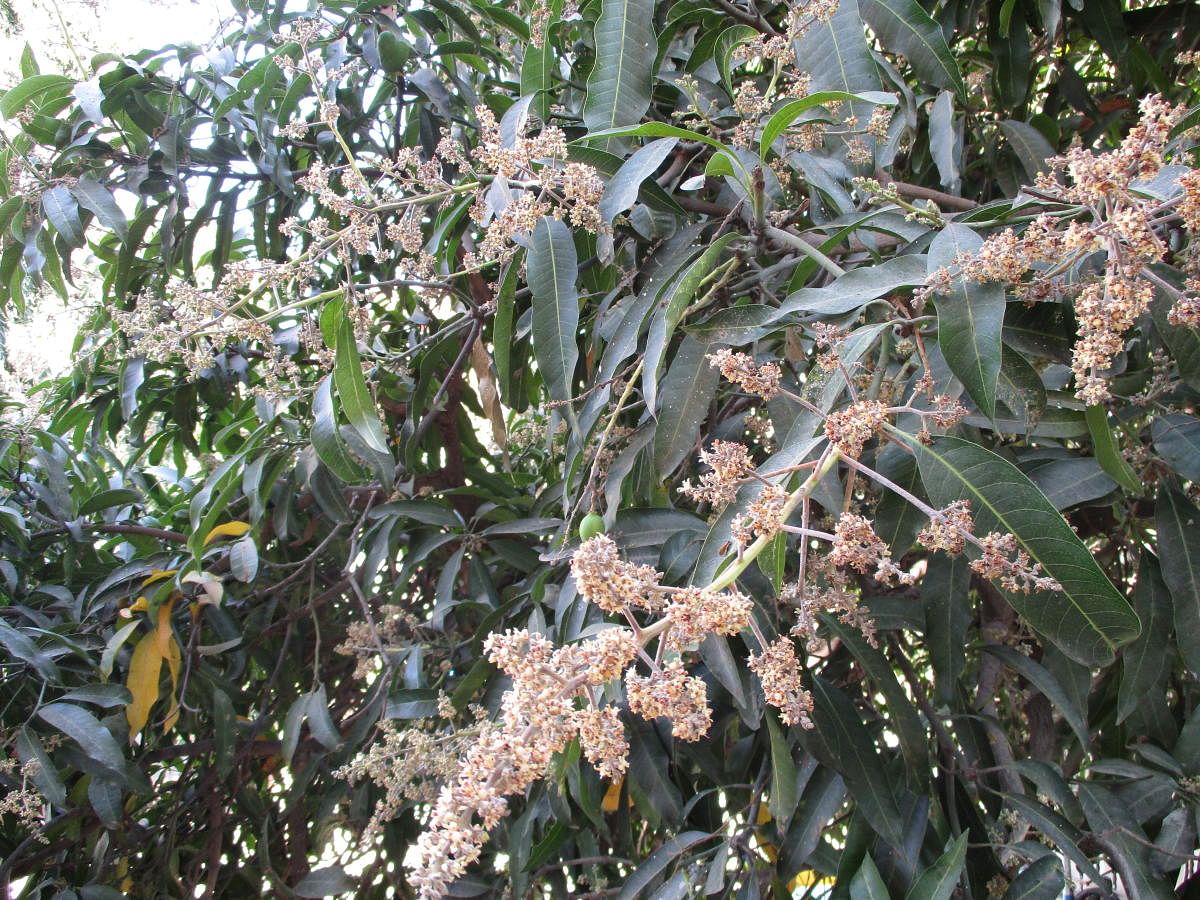Mango trees flowering in the months of November and December has become a common occurrence in Bengaluru. Strange as most old residents of the city will recall, they usually would flower only in February and bring us fruit in May. However, now in the city, the trees are heavily laden with flowers and in some cases tiny mangoes as well.
Dr. Yellappa Reddy, former secretary, Department of Ecology and Environment, Government of Karnataka and present Chairman of the Bangalore Environment Trust explains the phenomenon, saying it has both a positive and a negative effect.
He says the phenology of tropical fruit depends on the temperature and the humidity present in the air in that particular season. The fertility gradients in the branches of the tree, and it’s primordial buds, is fixed in advance. These primordial buds are affected by humidity and temperature and here in Bengaluru, regional climate change, plays an important role in inducing, the primordial buds early.
The disadvantage is that the pollinators which are the bees, ants and beetles who play an important role in cross-pollination may not be present during this season. Therefore most flowers wither away, as these natural pollinators cannot help in producing fruit.
Only 10% of the flowers may sustain themselves and withstand climate change stress, till the actual season arrives after which they grow into fruit with pollination.
The advantage according to Dr Reddy is that the quality of the crop will improve. The nutrients, and water supply is shared with fewer fruits and therefore, will improve the quality. Yes! The quantity of fruit will reduce, but the quality of the fruit will be excellent, he explains. Farmers may expect 500 kg from a tree and be disappointed with the low yield, but the quality of the fruit will be superior. That is a plus for us the consumer.
Air quality which includes pollution, also plays an important role in growing a healthy crop of mangoes. Bangalore is known for at least 30-40 days of mornings with mist and fog. This mist also plays a large role he explains. Mist increases the humidity in the air and the moisture level. All these factors control and regulate the yield—it’s quantity and quality.
In the past, we could observe how our mango trees would begin to flower in the first week of February, so our summer holidays were sweetened with the delicious fruit. With Climate Change changing the fruiting season, we still are able to collect a crop, albeit earlier than expected and smaller in quantity.
India is arguably the largest mango producing country in the world with annual mango production of 16,337,400 tons a year. A very wide variety of mangoes can be found across the country in India, with several states boasting of their favourites.
However, the most favoured variety hails from the Konkan region and as is commonly known as the Alphonso. History says it was the Portuguese who introduced grafting on mango trees, to produce extraordinary varieties like the Alphonso.
